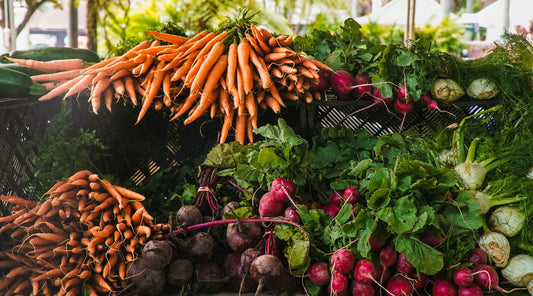The full moon closest to the autumnal equinox is known as the “Harvest Moon” and when you think of fall harvesting is probably one of the first things that come to mind. Indeed there is an abundance of fresh produce this time of year with everything from apples and pears to hearty root vegetables and squash including of course, pumpkins. Fall is also a great time for gardening. With the days getting shorter there are many plants that prefer cooler temperatures and will last until late in the season. Some will even grow through the winter.
Tips for Fall Planting
Since the weather has a major impact on gardening there are a few things to consider when planning for fall gardening. The date of the expected first frost is a good starting point to work backwards from for making sure your newly planted crops don’t perish in the cold before they produce. Most garden supply stores can tell you about how long it will take for each plant to reach maturity and you can also find this information on a site like The Farmer’s Almanac. Seed packs also have this information right on the package. Don’t plant too late.
If the weather is still in the 80s or 90s when you’re getting ready to plant your vegetables be sure to plant in the shade or cover up the soil for a week or so with a thick layer of straw. Some cool season produce won’t germinate if the soil is too hot. Balance is key here though. Plants need sunlight to grow so don’t pick a spot that’s cool because it doesn’t get any.
When it comes to choosing your plants there’s a nice variety of vegetables that will grow this time of year and keep fresh produce in your kitchen right up until winter, especially in milder climates. Many leafy greens will produce at least once before the cold sets in. Kale and chard can be harvested throughout winter, especially if you protect them with row covers, mulch, or cold frames. Many root vegetables also do well this time of year including carrots, beets, turnips, and parsnips, and actually taste a bit better after the cold sets in. Brussels sprouts and cabbage can also be options if you get them in the ground early enough or start with transplants.

Finally, you don’t have to plant just vegetables in the fall. This is also a great season to plant spring bulbs and divide bulbs from this year’s spring flowers. Just make sure you plant in an area that gets full sun and wait until after the soil cools to plant them. Shrubs and trees planted in the fall also tend to do quite well with cooler temperatures and more rainwater headed their way.
There are plenty of fall cleanup activities to be done in the garden as well like clearing out the vegetable garden of old growth, cleaning up garden beds, and spreading mulched leaves over unused beds to enrich the soil and protect it over the winter. The arrival of the harvest and shorter days doesn’t signal the end of gardening for the year. Fall planting is a great way to ensure fresh produce well into winter.






